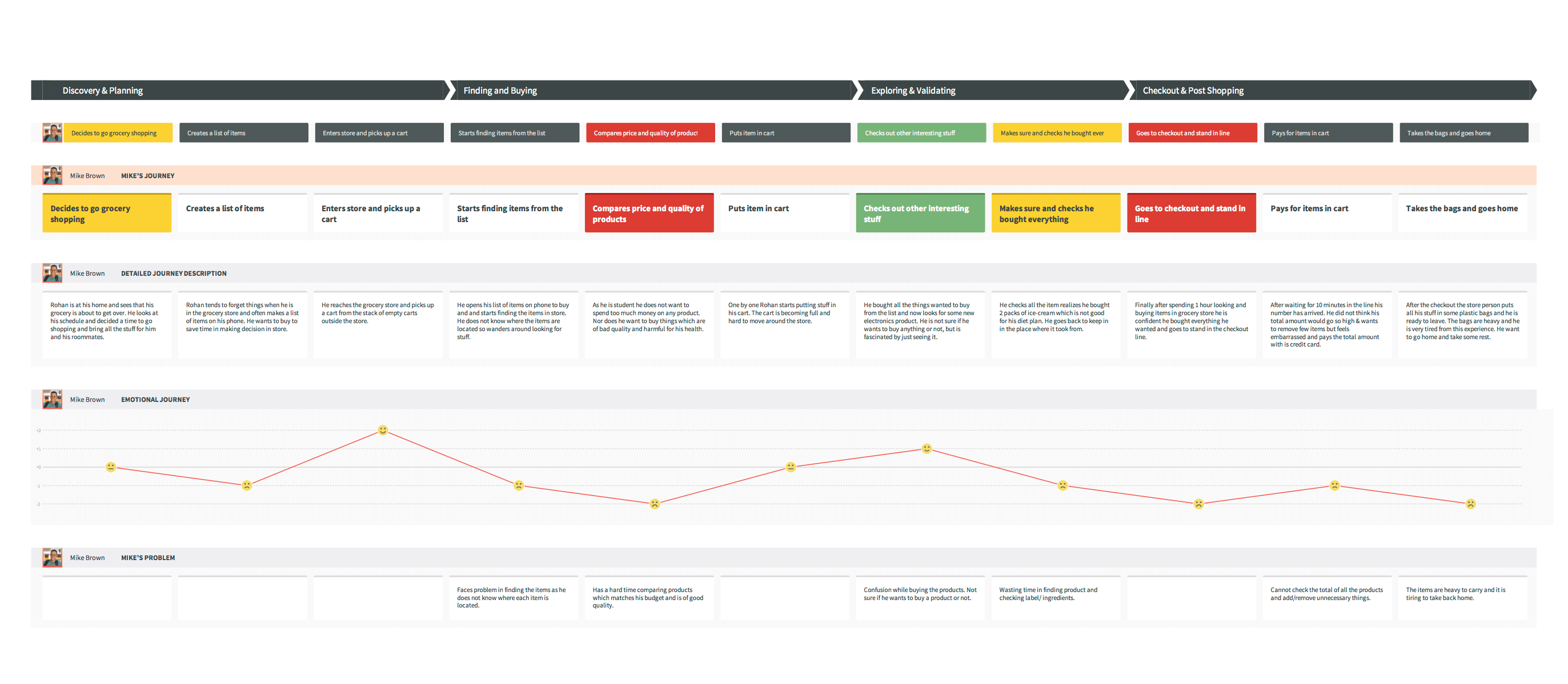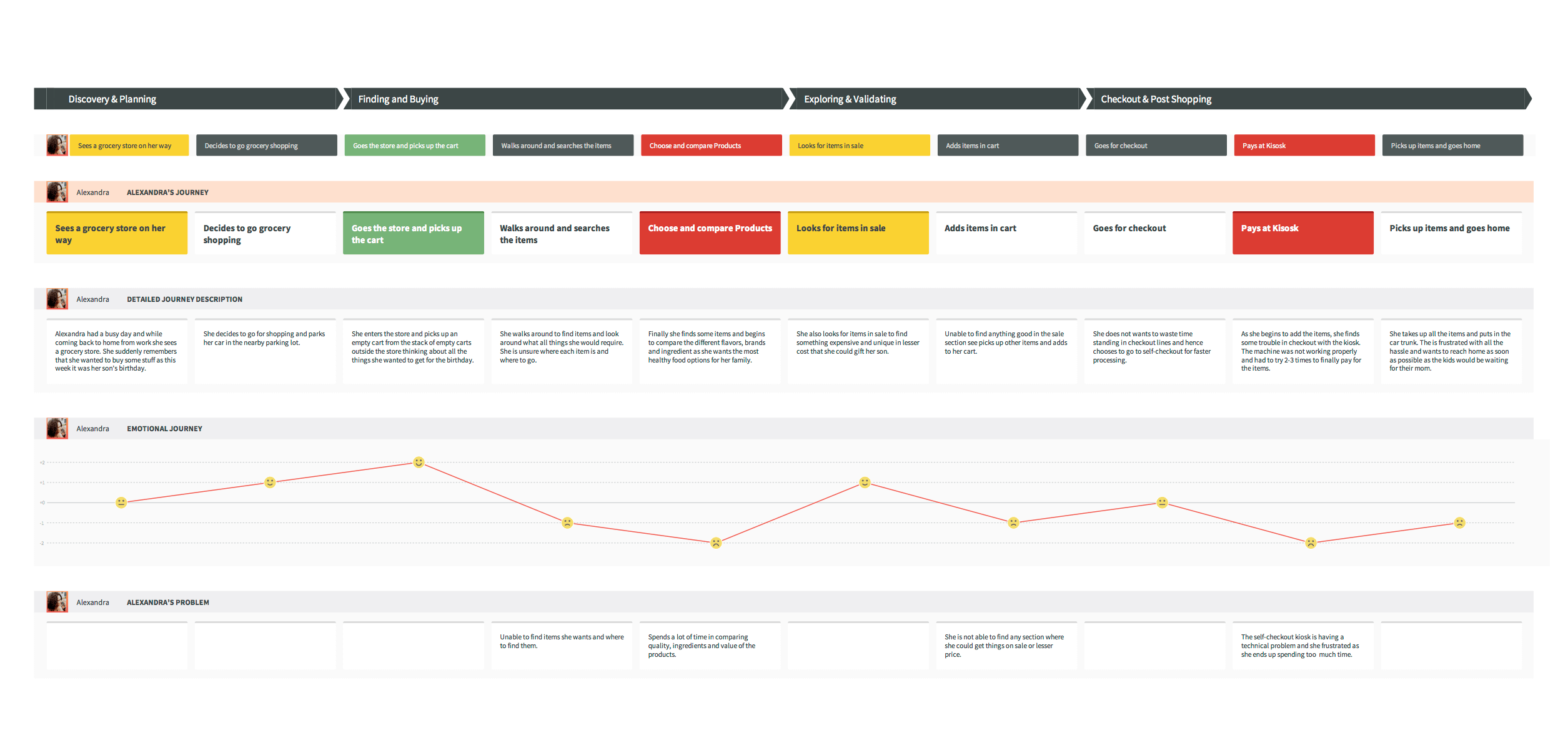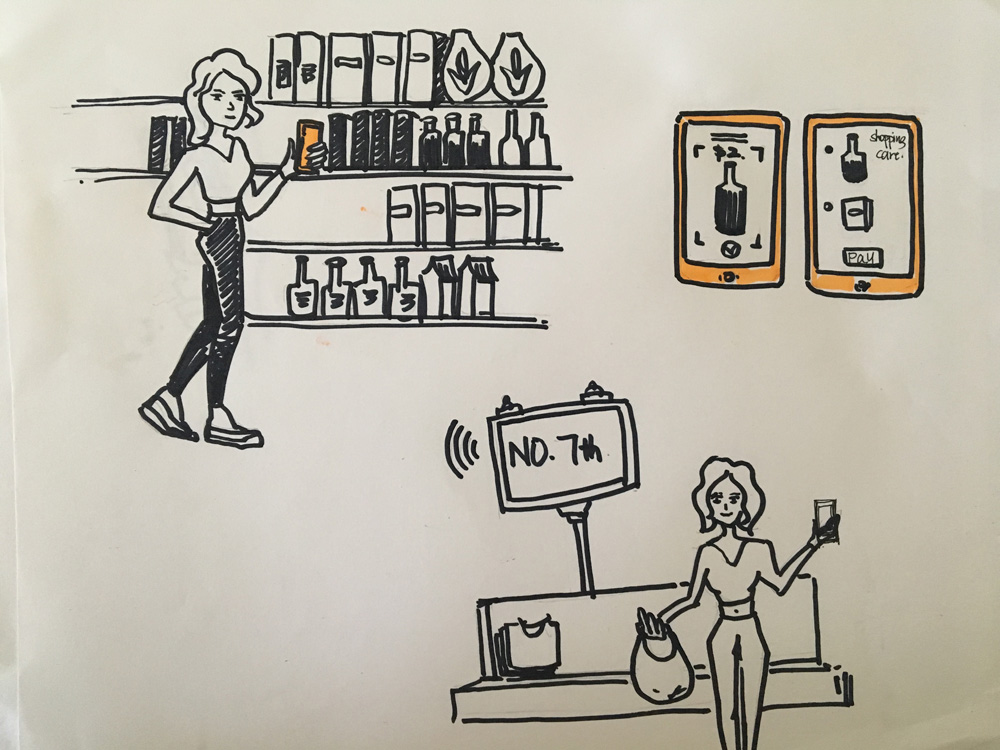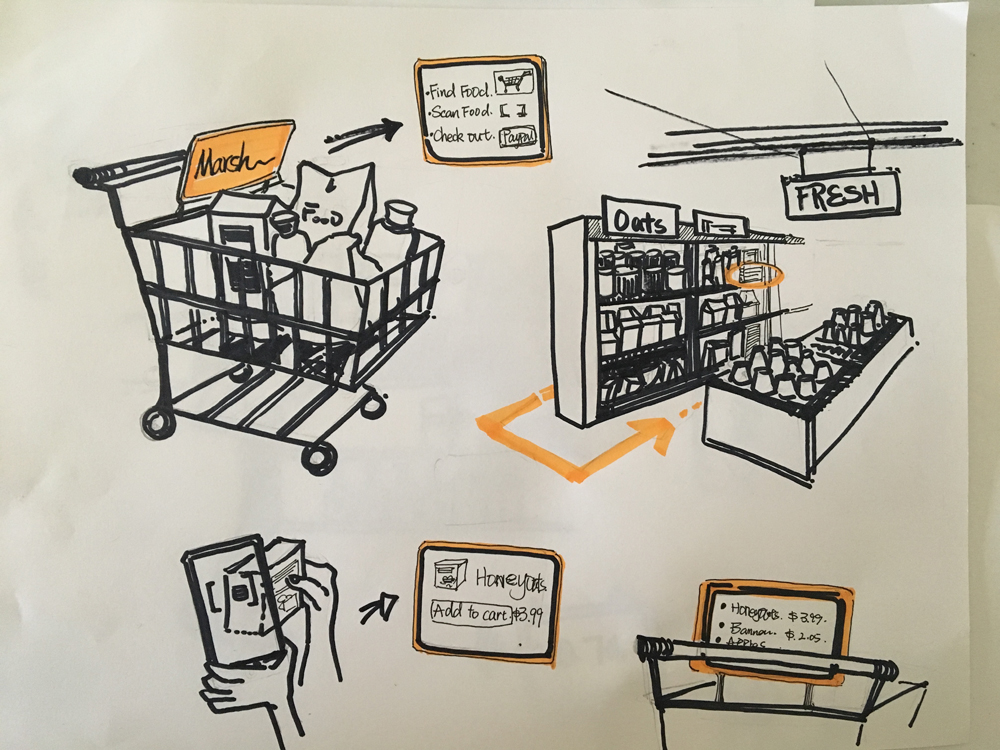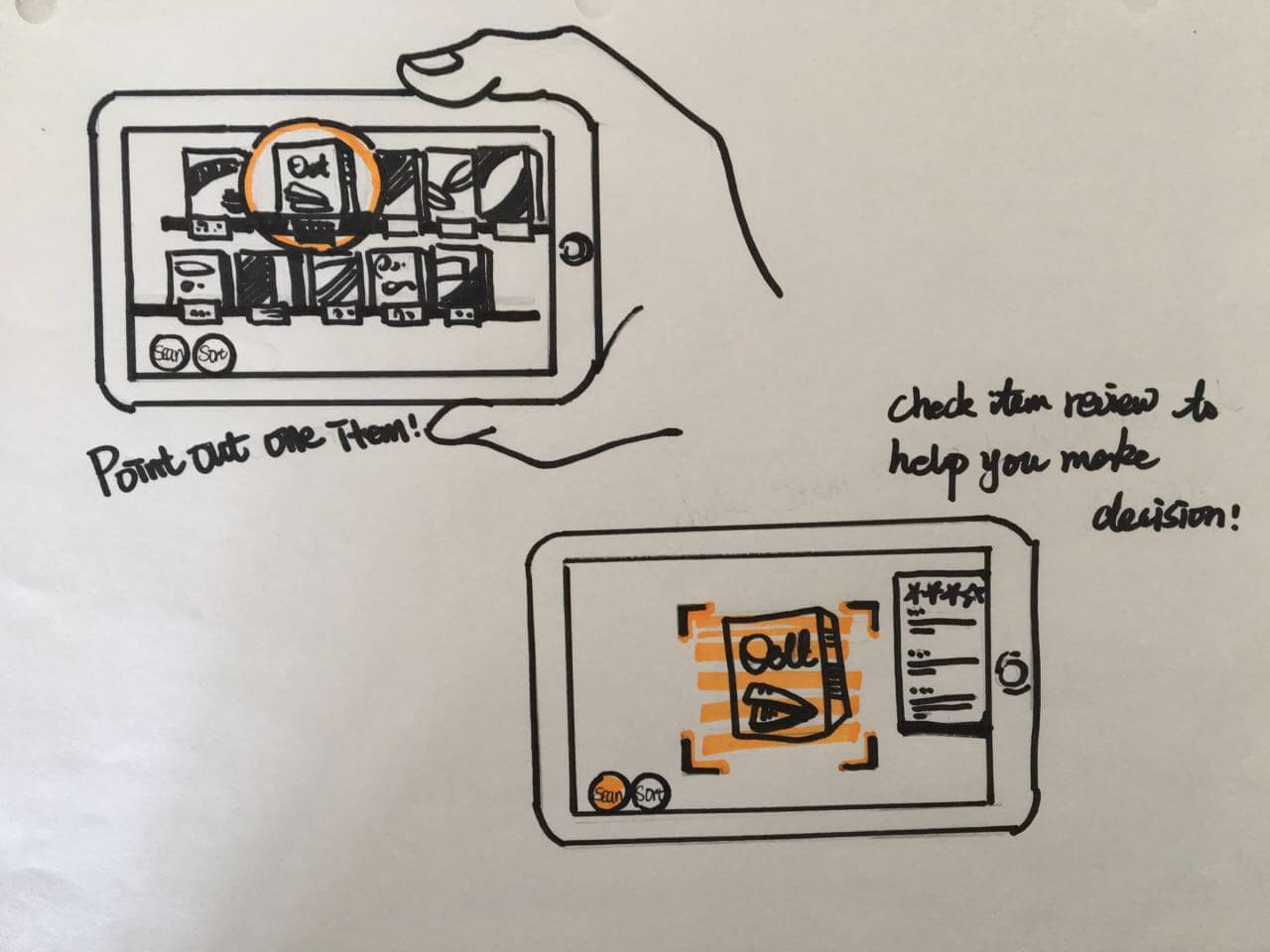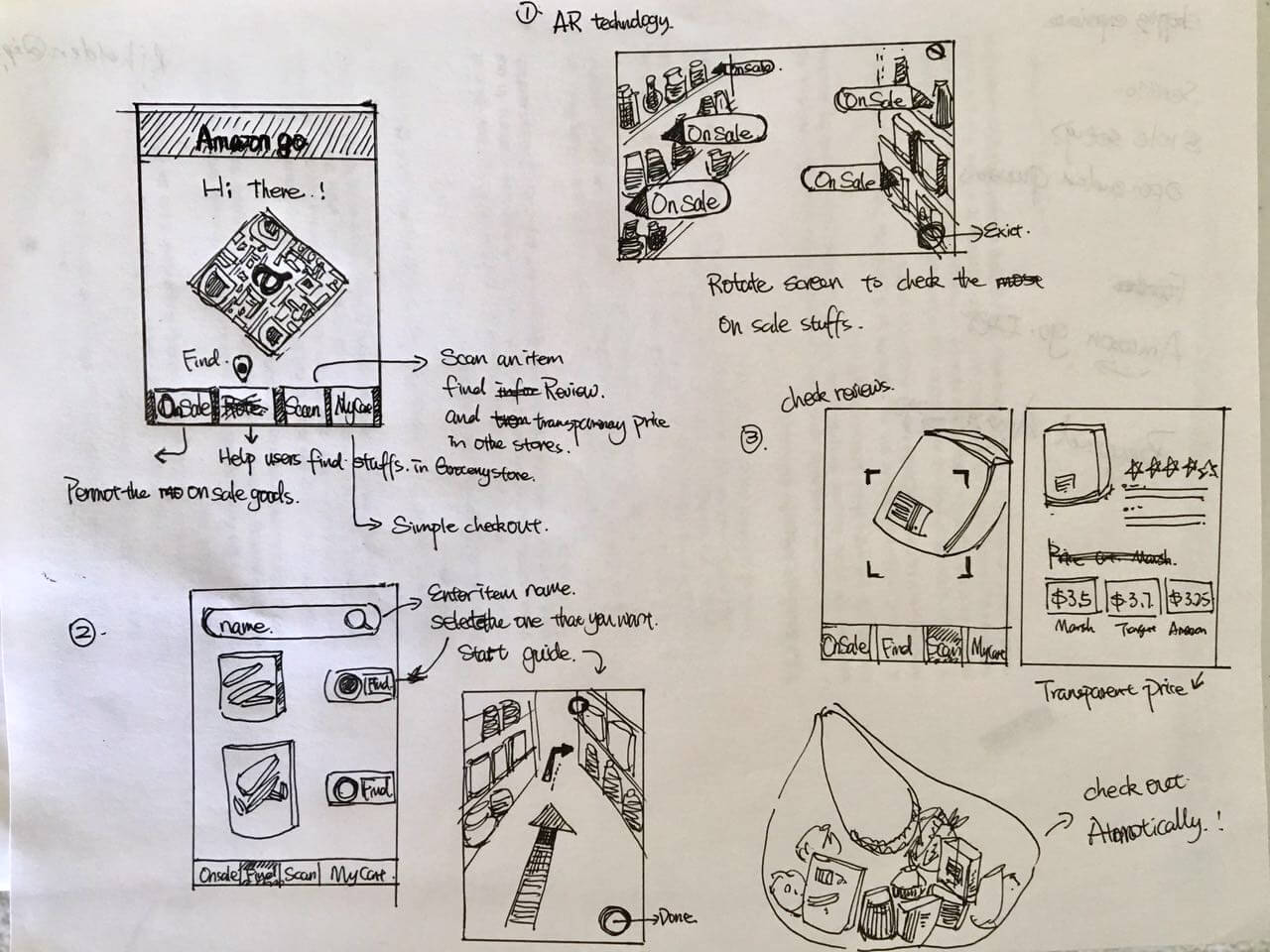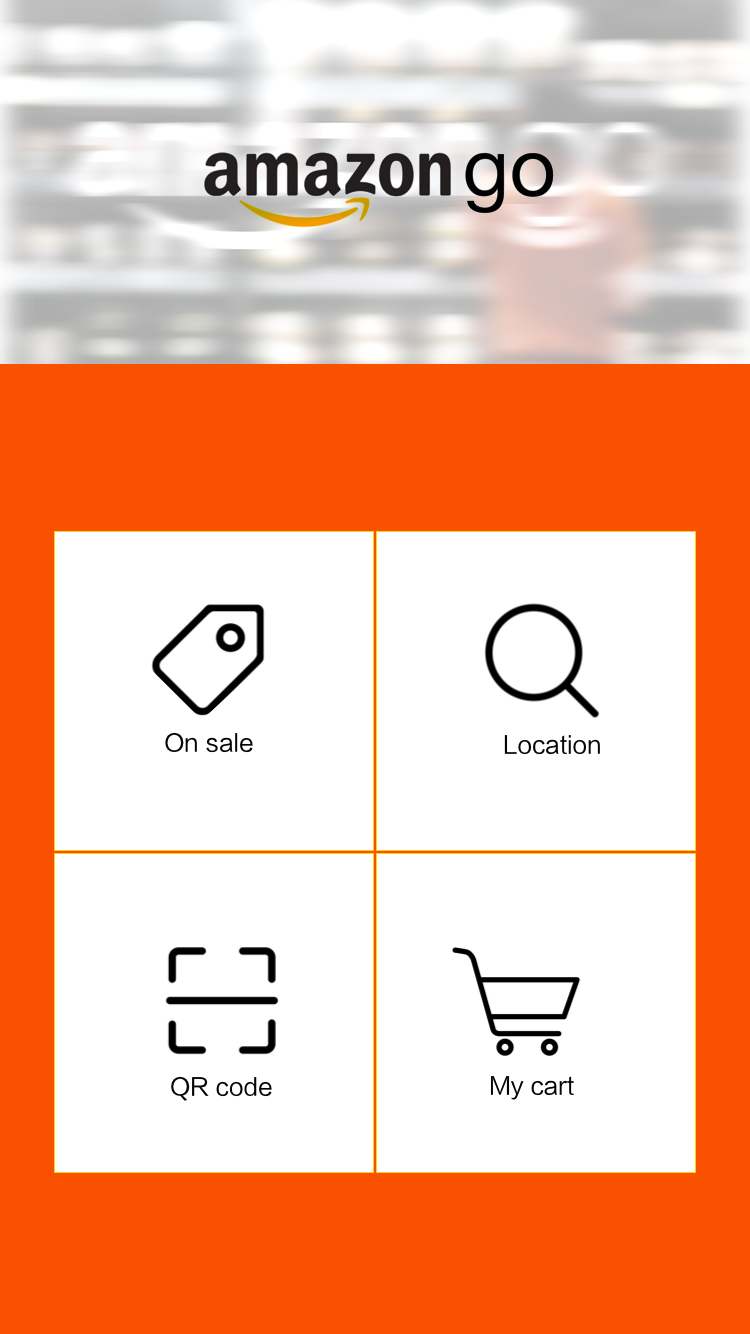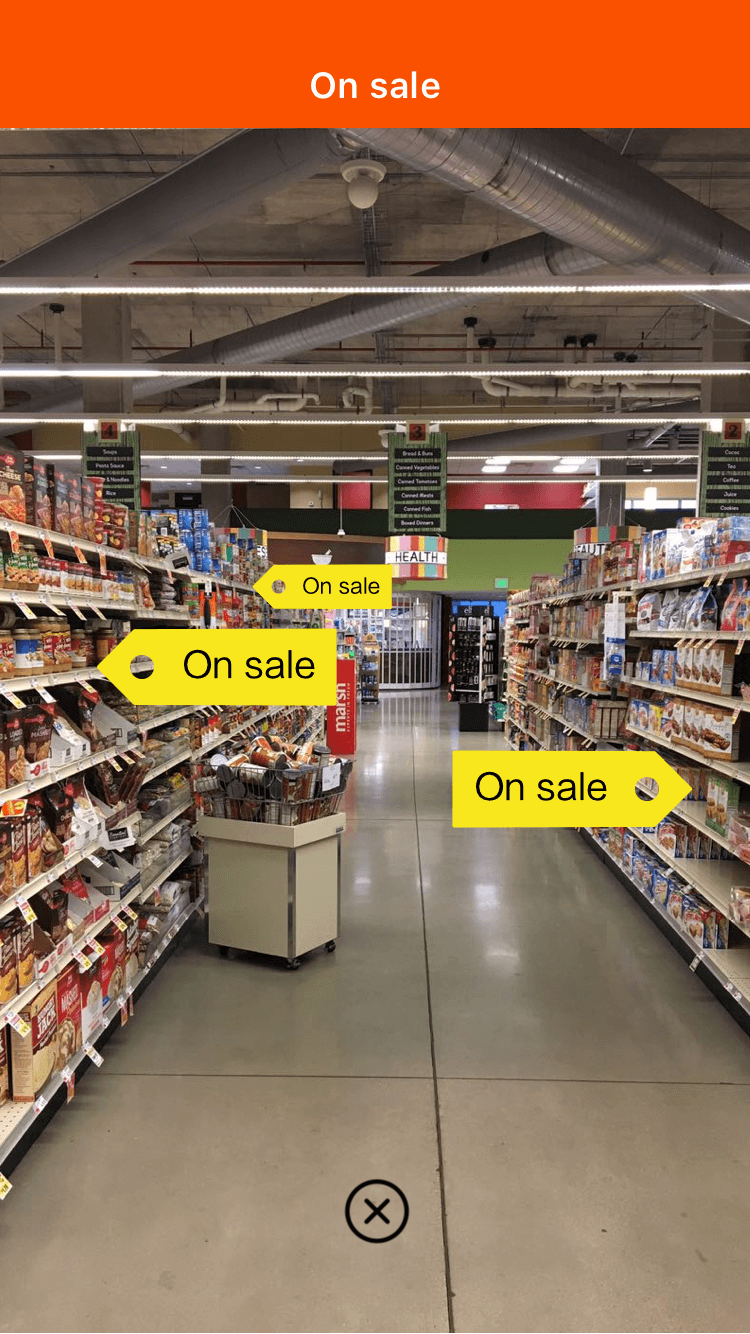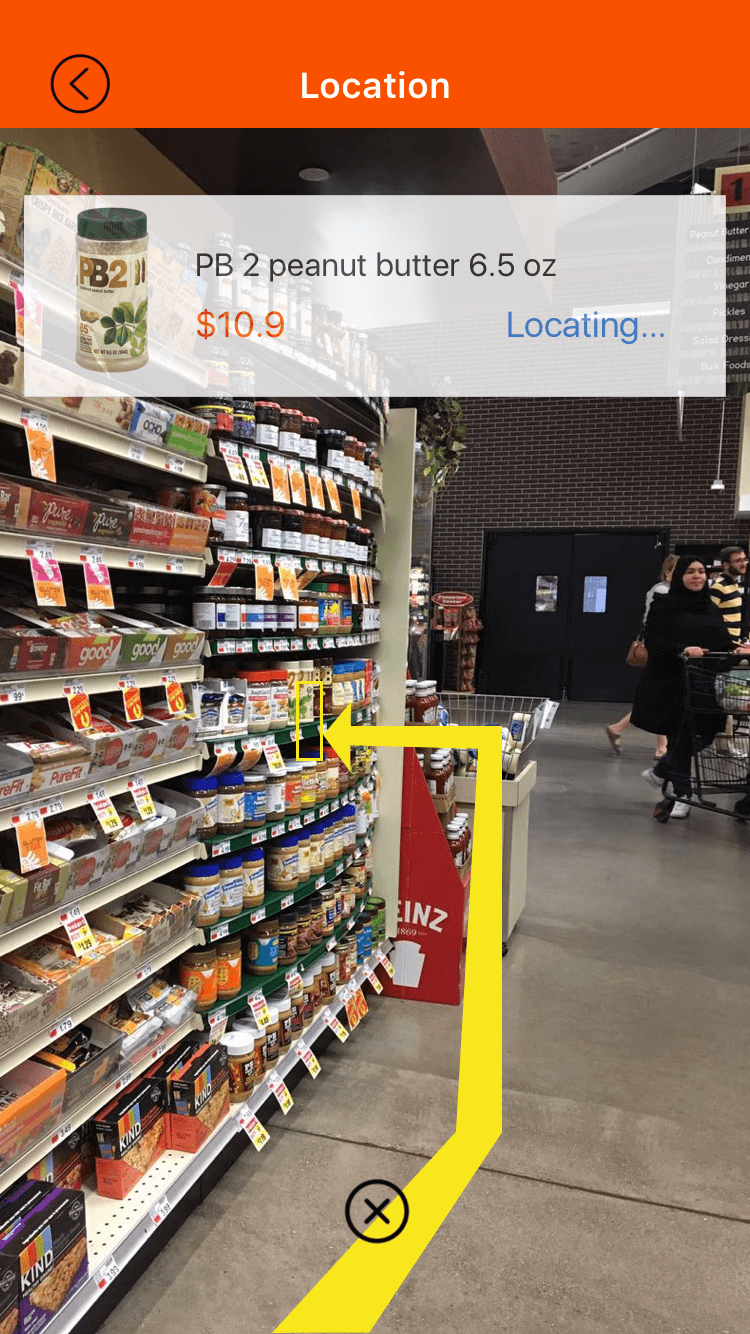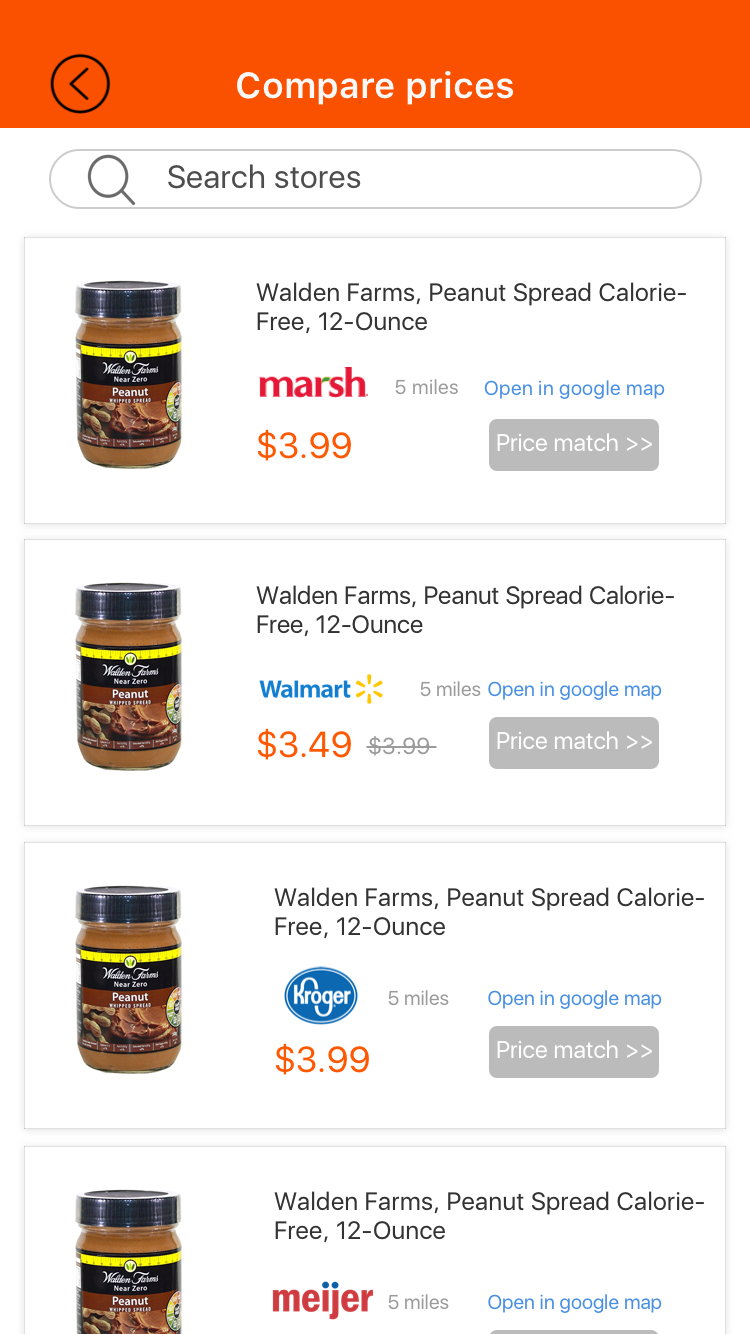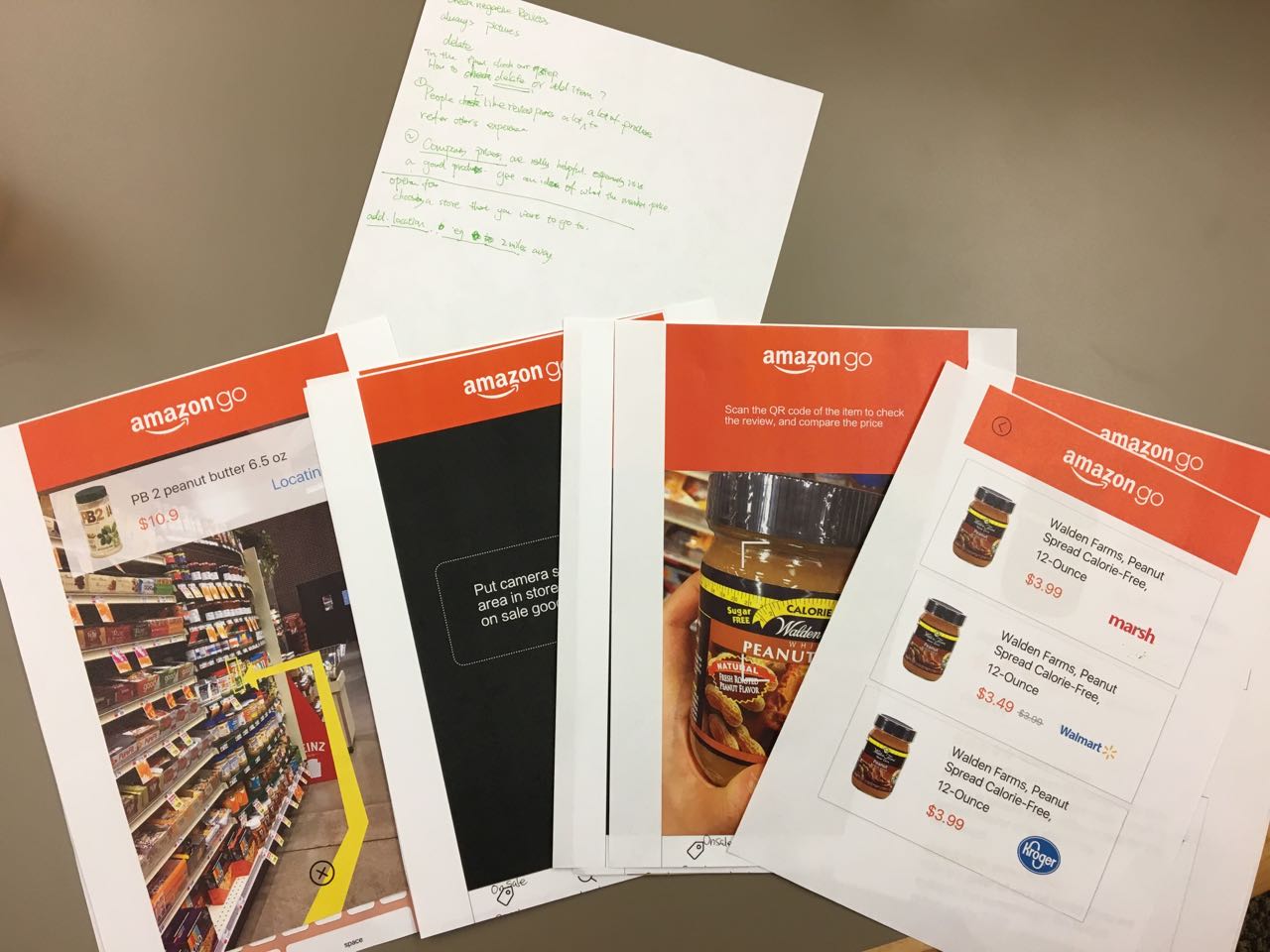Research
Identifying the problems
The main goal of the research was to understand the goals, motivations and pain points of the user so that we could design a better solution for them.
Interviews
We conducted semi-structured interviews with 10 regular shoppers to understand the problem space and their overall experience of shopping grocery from retail stores. This helped us to explore different problems & go deep down into few major issues that they currently face.
Market Research
We studied a research conducted by Food Marketing Institute (FMI). Some key results of this study showed that though retail stores are still the primary source for grocery shopping among all age groups, shoppers are using digital tools prior to and during shopping trips.



